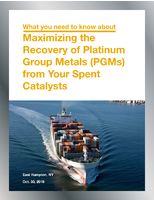MATHESON Works with Korean Ministry to Improve Gas and Chemical Safety in Korea
Basking Ridge, NJ –Â At the request of the Korea Gas Safety Corporation (KGSC), MATHESON experts have been working with the Korea Ministry of Trade, Industry and Energy (MOTIE, and formerly, the Ministry of Knowledge Economy) and the KGSC to improve gas and chemical safety in Korea.
The relationship began late in 2012 at a chemicals safety conference sponsored by several Korean government agencies, including MOTIE and KGSC. The principal objectives of the conference were the study of chemical spills, improvements in the training of chemical workers, and improvements in the readiness of Korean emergency responders.
During the conference, Kyoung Kyu Kim, the Safety, Health, and Environment Manager for MATHESON's Korean-based operations, reviewed MATHESON's emergency response procedures and outlined the US Occupational Health and Safety Administration (OSHA) safety requirements for emergency response.
Kim also recommended that gas and chemical suppliers in Korea be legally obligated to supply HAZMAT training for workers who handle hazardous materials.
With specific reference to compressed gas safety, Kim recommended specific actions be taken to conduct structural tests on gas cylinders, and to create a cylinder remediation company so that cylinders containing residues of hazardous materials can be safely remediated in Korea.
MATHESON's work with the Korean government did not end at the conference. MATHESON hosted a visit in November, 2012 by three officials from KGSC. The KGSC team and Kim, along with other MATHESON safety experts, toured MATHESON's gas production and packaging facility in New Johnsonville, Tennessee. The New Johnsonville facility is arguably one of the most advanced gas production sites in the world, and is also the production site for MATHESON's most hazardous chemical gases. The New Johnsonville site has a spotless chemical safety record, owing to strict adherence to appropriate production procedures combined with elaborate, and redundant, systems for the control, neutralization, and abatement of chemical releases.
At New Johnsonville, KGSC representatives received information about MATHESON's emergency response related training program and US HAZMAT-related legal requirements.
The US visit organized by MATHESON also included visits to facilities operated by a compressed gas container fabricator and ultrasonic testing company (FIBA Technologies), and a cylinder remediation company (SET Environmental).
The series of facility tours afforded the team from KGSC some first-hand opportunities to observe the application of safety protocols, manufacturing procedures, cylinder testing, and cylinder remediation/neutralization.
After the visit to the US facilities, MATHESON organized a training program for Emergency Response Teams at the KGSC Training Center in Seoul for Korean gas companies and others who handle large quantities of gas cylinders. Kyoung Kyu Kim remains personally involved in developing the Emergency Response Team (ERT) training curriculum for standardized ERT training in Korea. Says Kim, "I'm proud that the KGSC looked to MATHESON and happy to support the Korean Government's effort to improve gas and chemical safety throughout Korea."
MATHESON is a single source for industrial, medical, specialty and electronic gases, gas handling equipment, high performance purification systems, engineering and gas management services, and on-site gas generation with a mission to deliver innovative solutions for global customer requirements. MATHESON is the largest subsidiary of the Taiyo Nippon Sanso Corporation Group, the largest Japanese supplier of industrial gases and one of the five largest suppliers of industrial, specialty, and electronics gases in the world.
BACKGROUND:
In September of 2012, a chemical plant in Korea had experienced a release of hydrofluoric acid. The incident led to the deaths of five workers. Serious injuries to 18 others (workers and emergency personnel) were also reported. In the area surrounding the plant and downwind from it, there were widespread reports of sickened residents and livestock. Damages attributable to the spill, including remediation, health incidents, and closures of some businesses, have been estimated at over $20 million.
Investigations following the incident identified human error as the cause of the initial release. Firefighters at the scene were not properly prepared for containing and neutralizing hydrofluoric acid. Their actions intensified and spread the problem.
The preventable nature of the release, combined with the ill-advised actions in response, led Korean authorities to assemble the safety conference.
Contacts:
Beth Sullivan, +1-215-648-4026
Christine Scully, +1-201-825-1331




